Dr. Ken Cornell Co-authored a Paper Published in Toxicology and Applied Pharmacology
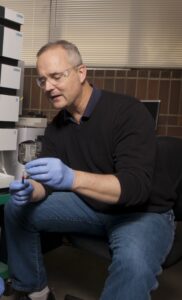
Lamb CL*, Cholico GN*, Pu X, Hagler GD, Cornell KA, Mitchell KA (2016) 2,3,7,8-Tetrachlorodibenzo-p-dioxin (TCDD) increases necroinflammation and hepatic stellate cell activation but does not exacerbate experimental liver fibrosis in mice. Toxicology and Applied Pharmacology, 311: 42-51. NIHMSID: NIHMS820493, PMID 27693115, PMCID PMC5079771. PubMed – Toxicology and Applied Pharmacology
Drs. Cheryl Jorcyk and Ken Cornell Co-authored a Publication in The Journal of Higher Education Theory and Practice

 Nadelson, L, Jorcyk, C, Yang, D, Smith, J, Matson, S, Cornell, K, and Husting, V. What good is it for me? The Development and Validation of the Individual Science Usefulness Survey. The Journal of Higher Education Theory and Practice. SUS
Nadelson, L, Jorcyk, C, Yang, D, Smith, J, Matson, S, Cornell, K, and Husting, V. What good is it for me? The Development and Validation of the Individual Science Usefulness Survey. The Journal of Higher Education Theory and Practice. SUS
Dr. Owen McDougal Co-authored a Publication in the Bioorganic & Medicinal Chemistry Journal
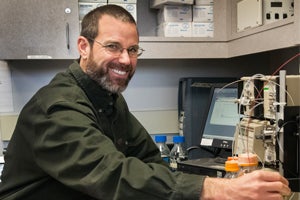
Matthew D. King, Paul Phillips, Michael Katz, Sarah Lew, Sarah Bradburn, Matthew W. Turner, Tim Andersen, Owen M. McDougal,* Biochem. Mol. Biol. Educ., “Computational Exploration of a Protein Receptor Binding Space with Student Proposed Ligands” 44(1), 63-67 (2016). DOI: 10.1002/bmb.20925.
Dr. Ken Cornell Co-authored a Paper Published in Toxicology

Harvey WA*, Jurgensen K*, Pu X, Lamb CL*, Cornell KA, Clark RJ*, Klocke C*, Mitchell KA (2016) Exposure to 2,3,7,8-tetrachlorodibenzo-p-dioxin (TCDD) increases human hepatic stellate cell activation. Toxicology, 344-346: 26-33. NIHMSID: NIHMS760293, PMID 26860701, PMCID PMC4792734. PMC
Dr. Ken Cornell Co-authored a Paper Published in the Proceedings of the American Society of Civil Engineers

Nazaridaftari A*, Farid A, Cornell KA (2016) Impedance-based water quality monitoring using the parallel plate method. Geo-Chicago 2016, p. 378-392. 738p. Proceedings of the American Society of Civil Engineers. ASCE Library
Dr. Brad Morrison Co-authored a Paper Published in Neuroscience Letters
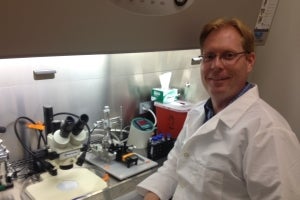
Joshua E. Albright, Iva Stojkovska, Abir A. Rahman, Connor J. Brown, Brad E. Morrison, Nestin-positive/SOX2−negative cells mediate adult neurogenesis of nigral dopaminergic neurons in mice, Neuroscience Letters, Volume 615, 26 February 2016, Pages 50-54, ISSN 0304-3940, DOI/10.1016/j.neulet.2016.01.019
Drs. Daniel Fologea and Julie Tinker Co-authored a Publication in the Biophysical Journal
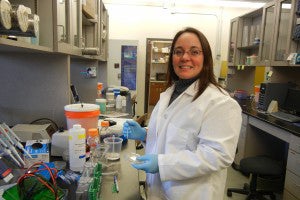
Shrestha, N., Bryant, S., Pu, X., Carnig, P., Tinker, J., Hanna, C., & Fologea, D. (February 16, 2016). Peptide Translocation through Single Lysenin Channels. Biophysical Journal: Supplement 1, 110, 3.) INFONA
Dr. Matthew W. Turner and Dr. Owen McDougal Co-authored a Paper Published in the Bioorganic & Medicinal Chemistry Journal

Matthew W. Turner, Roberto Cruz, Jared Mattos, Nic Baughman, Jordan Elwell, Jenny Fothergill, Anna Nielsen, Jessica Brookhouse, Ashton Bartlett, Petr Malek, Xinzhu Pu, Matthew D. King, Owen M. McDougal,* Bioorg. Med. Chem., “Cyclopamine Bioactivity by Extraction Method from Veratrum californicum.” 24(16), 3752-3757 (2016). PMCID: PMC4955791 NIHMSID: NIHMS797334 PMID: 27338657. PMC – Cyclopamine Bioactivity by Extraction Method from Veratrum californicum
Dr. Owen McDougal and Dr. Paul Phillips Co-authored a Publication in AIMS Press Journal

Paul Daniel Phillips,† Timothy Andersen, Owen M. McDougal,* AIMS Molecular Science, “Assessing the Utility and Limitations of High Throughput Virtual Screening” 3(2), 238-245 (2016) DOI: 10.3934 molsci 2016.2.238.
Dr. Daniel Fologea Co-authored a Paper Published in the Biophysical Journal
Bryant, S. L., Shrestha, N., Carnig, P., Kosydar, S. R., Belzeski, P., May, J., McDaid, L., … Fologea, D. (February 16, 2016). Mechanism of Interaction between Adenosine Phosphates and Lysenin Channels. Biophysical Journal: Supplement 1, 110, 3.)
Boise State Physicist Extracts Lessons from Sea Squirts
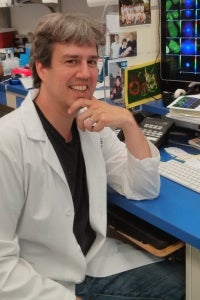
There are a bewildering variety of chemical processes and mechanical forces at play in a single living cell. While much remains to be learned, progress has been made in determining which molecules within cells trigger specific biochemical reactions. Researchers refer to the components of these biochemical systems as “modules.” Meanwhile, mechanical forces and the molecular signals a cell uses to regulate them remain relatively unexplored.
Now, a newly formed research team, financed by an innovative Scialog Award, will attempt to discover at least a few mechanical modules by focusing on a specific system of broad interest — cell extrusion in epithelial sheets. Epithelial tissues line organs, cavities and blood vessels throughout an animal’s body; epithelial cells form sheets by connecting to one another via their lateral membranes.
The researchers — Adriana Dawes (Ohio State University), Matthew Ferguson (Boise State University), Dinah Loerke (University of Denver) and Megan Valentine (University of California, Santa Barbara) — have each received $50,000 to come together to attempt to modify and study epithelial cell extrusion in Botryllus schlosseri, also known as the star ascidian, golden star tunicate or sea squirt. Click here to read more about the sea squirts article
NIH-funded Research Aims to Silence Bacteria
Communication is an essential survival skill among all species, even the microscopic variety. But while humans generally use words and gestures to express needs, and animals screech, bark and howl, bacteria communicate using chemical molecules.
Understanding that chemical language is the goal of Boise State biochemist Rajesh Nagarajan, who recently received a $395,813, three-year grant from the National Institutes of Health to solve the problem.
Specifically, Nagarajan will look at how bacteria make the signal molecules to communicate with their neighbors. This communication happens only when bacteria need it in order to form a critical mass and attack, and different bacteria use different enzymes to, in essence, speak a specific language understood only by other targeted bacteria.
Click here to read more about silencing bacteria